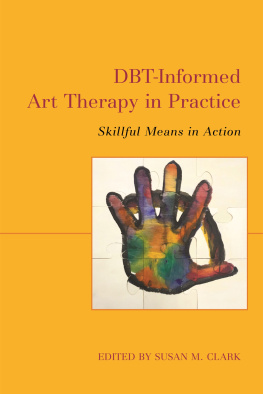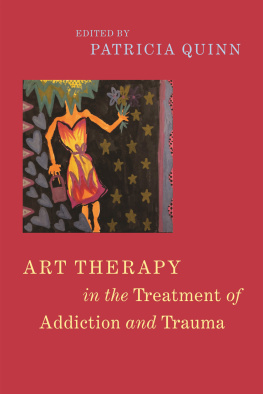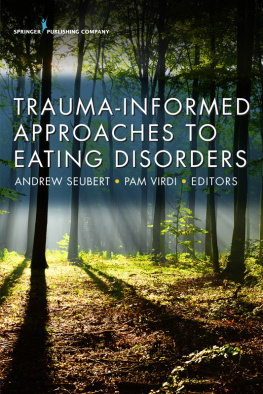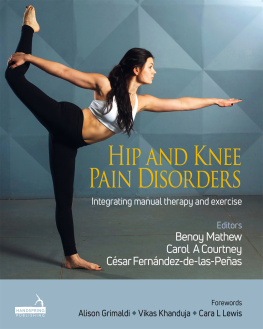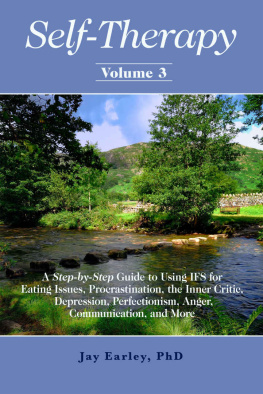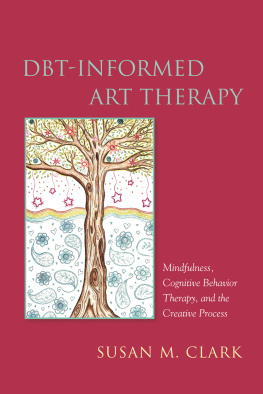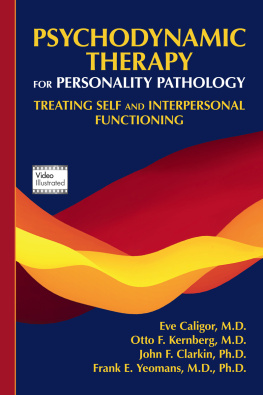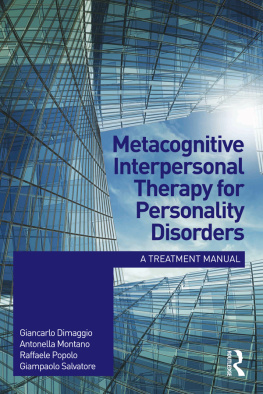Contents

DBT-Informed
Art Therapy
in Practice
Skillful Means in Action
EDITED BY SUSAN M. CLARK

Contents
Introduction
This volume builds upon the foundation of DBT-Informed Art Therapy: Mindfulness, Cognitive Behavior Therapy, and the Creative Process (Clark 2017). My goal for that book was to provide readers with strong overviews of both dialectical behavior therapy (DBT) and art therapy, as well as describe how such differing interventions might come together to assist in the treatment and recovery of individuals with significant emotional and behavioral instability. DBT-Informed Art Therapy contains plentiful theoretical information, as well as creative visual exercises for developing competency with DBTs four skills training modules: core mindfulness, interpersonal effectiveness, emotion regulation, and distress tolerance (Linehan 2015a, 2015b).
The art therapy activities in DBT-Informed Art Therapy are suitable for both adult and adolescent clients, and I wrote at length about my experiences working in varied treatment settings (including a community mental health agency, a residential center for addictions, and an intensive outpatient eating disorder program). However, I was also aware of my natural limitations as one individual clinician, which is why I actively sought out other DBT-informed creative arts therapy practitioners. A few of those individuals, who were kind enough to answer my questions and/or donate intervention(s) for the first book, have written chapters in this one.
DBT-Informed Art Therapy in Practice: Skillful Means in Action describes practical applications of the DBT-informed arts therapies within a wide range of settings. The authors hail from the United Kingdom (England), Canada, Australia, New Zealand, Denmark, and the United States. Many possess decades of clinical experience. Some are accomplished instructors, trainers, and presenters. All have great enthusiasm for this novel approach and contribute valuable perspectives resulting from their diverse interests and backgrounds. My hope is that readers become inspired to apply what they learn to their own work. Perhaps some will even pursue opportunities to formally research the efficacy of DBT-informed art therapy (and, ideally, publish their findings in peer-reviewed journals).
What is skillful means in action?
According to DBTs developer, Marsha Linehan, PhD, skillful means comes from Zen Buddhism and refers to any effective method that aids a person to experience reality as it is, or, in DBT terms, to enter fully into wise mind (Linehan 2015a, p.223). It is the heart and spirit of participating effectively , that is, throwing oneself into the present moment and acting as skillfully as possible in order to pursue ones goals: Do what is needed for the situation you are in, Linehan explains, not the situation you wish you were in; not the one that is fair; not the one that is more comfortable (2015b, p.60). By integrating their own unique versions of DBT-informed arts therapy into their respective clinical environments, the authors demonstrate how to assist individuals in acquiring, deepening their understanding of, and applying these important cognitive and behavioral strategies across all aspects of their lives. Such a process is, essentially, skillful means in action .
How this book is organized
The book is divided into two parts. The first, DBT-Informed Visual Art Therapy in Practice, contains eight chapters that emphasize more traditional one- and two-dimensional visual art therapy approaches. In highlights Megan Shiells decision to re-career as an art therapist at age 50. Within a handful of years she became a highly respected DBT therapist, skills trainer, and pioneer in DBT-informed art therapy who had designed a novel online skills training program for use by both clients and treatment providers.
, co-authors Emma Allen and Anthony Webster share their work with a troubled young man living in long-term seclusion within a high secure treatment unit for mental illnesses and learning disabilities. This hands-on, collaborative intervention proved essential to his development of emotion regulation skills and, ultimately, an ability to achieve and maintain appropriate and rewarding relationships with others.
Part 2, Multi-Modal DBT-Informed Approaches, comprises six chapters that feature unique fusions of DBT-informed visual art therapy and one or more other modalities (e.g., creative writing, movement, drama). , Karin von Daler reintroduces the creative mindfulness approach, which she and colleague Lori Schwanbeck first wrote about in JKPs Mindfulness and the Arts Therapies: Theory and Practice (2014; Laury Rappaport, editor).
In art therapist Penelope James explores one effective approach for implementing a visual journaling (combined art and writing) technique to enhance participants experiences in a psychoeducational day treatment program.
How to use this book
As in the previous volume, I urge readers who are less familiar with DBT to (at minimum) read the second edition of the DBT Skills Training Manual (Linehan 2015a) and DBT Skills Training Manual: Handouts and Worksheets (Linehan 2015b). For those who wish to go a bit deeper, the original treatment manual, Cognitive-Behavioral Treatment of Borderline Personality Disorder (Linehan 1993), is essential. Newer offerings from experts in the field include Doing Dialectical Behavior Therapy: A Practical Guide (2012) by Kelly Koerner, and DBT Principles in Action: Acceptance, Change, and Dialectics (2016) by Charles Swenson.
This volume is not a substitute for proper training in a mental health treatment discipline (e.g., professional counseling, clinical psychology, social work, and so on), one or more creative art therapy modalities, and/or DBT. The information contained within each chapter is meant to provide ideas and inspiration around the use of DBT-informed art therapy; however, please exercise discretion with implementing any of the described interventions. Even fully credentialed treatment providers may seek out additional training, consultation, and/or supervision prior to using some of the techniques presented here.
A word about language
Each chapter contributor possesses their own beliefs and preferences regarding how they refer to the people with whom they work. Depending upon an authors educational and professional background, as well as the clinical setting described in their chapter, identifiers such as clients, patients, and participants typically appear. Gender pronouns vary from feminine to gender-neutral (e.g., they, them, their). In this age of expanding understanding of, and sensitivity toward, the rich range of human identities, my colleagues and I made every effort to balance the many practical aspects of writing for publication with a heartfelt desire to validate and affirm others. Although the results are no doubt imperfect, we offer this book in the spirit of inclusion and respect.
References
Clark, S.M. (2017) DBT-Informed Art Therapy: Mindfulness, Cognitive Behavior Therapy, and the Creative Process . London: Jessica Kingsley Publishers.
Heiderscheidt, A. (ed.) (2016) Creative Arts Therapies and Clients with Eating Disorders . London: Jessica Kingsley Publishers.
Koerner, K. (2012) Doing Dialectical Behavior Therapy: A Practical Guide . New York, NY: Guilford Press.
Linehan, M.M. (1993) Cognitive-Behavioral Treatment of Borderline Personality Disorder . New York, NY: Guilford Press.

